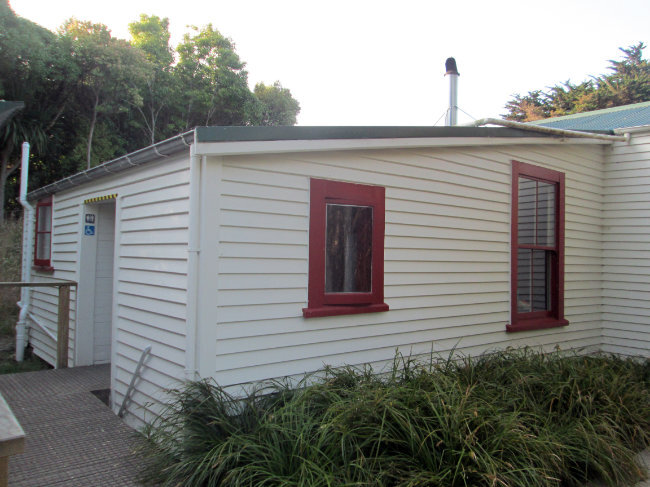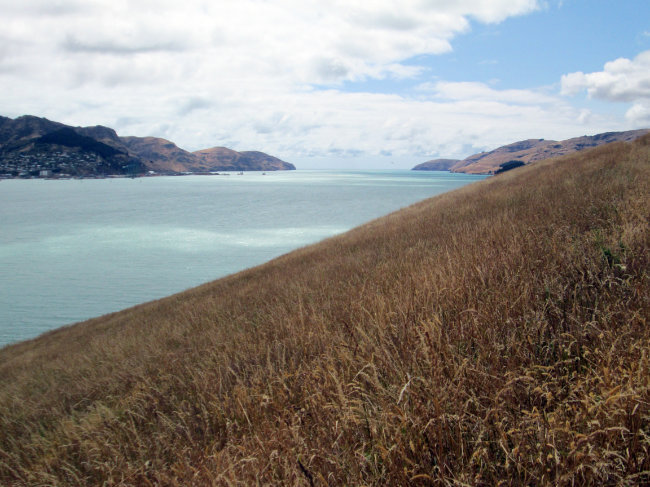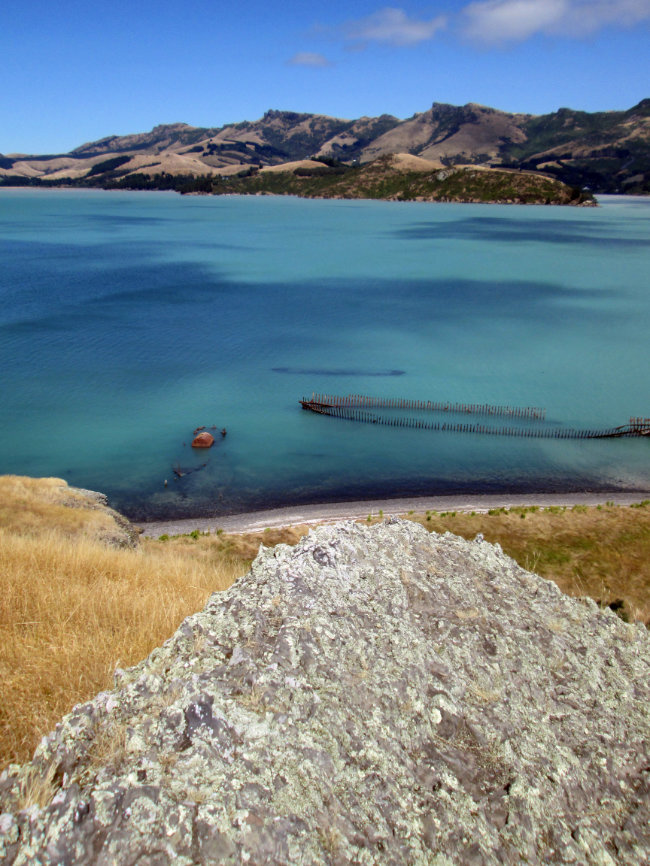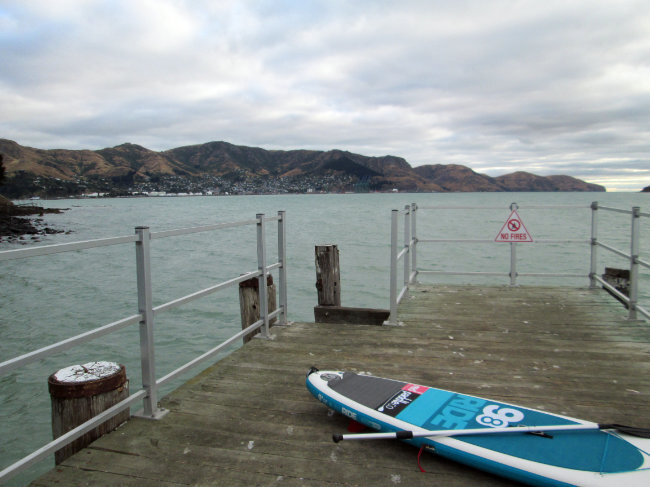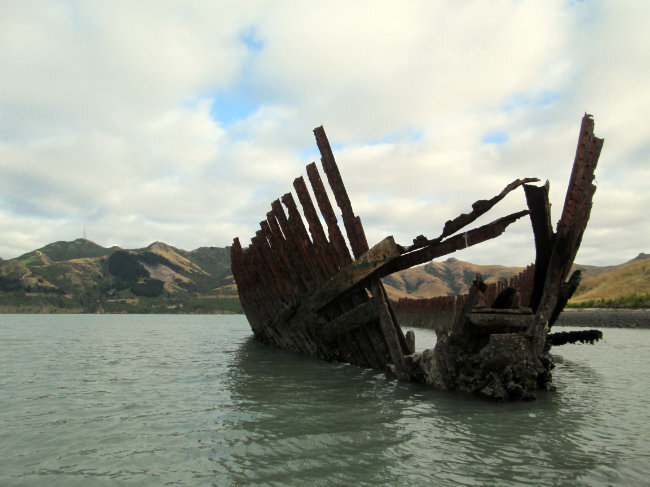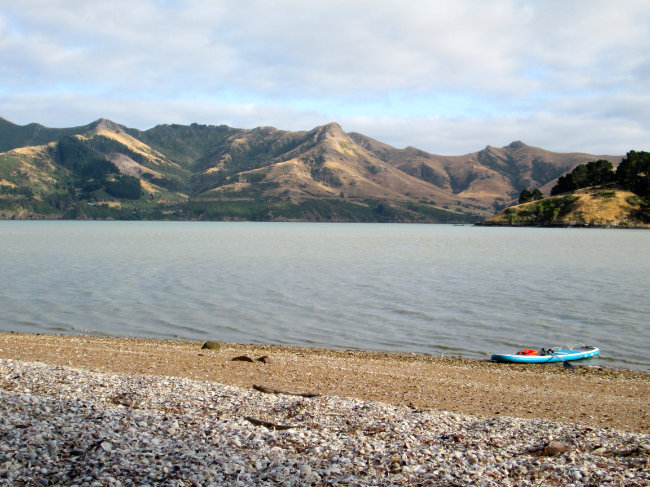Living in New Zealand: Wild Swimming Safely Is Hard When There Are Idiots on Jet Skis
In the summer I usually swim loads in Lyttelton Harbour. But it has been an odd summer with too many cool, windy days and the Lyttelton Port Company have been dredging the inner harbour through January and February, our prime swimming months. Plus I have been exceptionally busy in the garden sorting out my new studio. A lot of excuses! But I did swim a lot when I was on Quail Island as volunteer DOC warden. And it reminded me just how much I loathe jet-skis.
Jet-skis are an abomination and I wish they were only ever used by trained lifeguards (not by bevvied-up blokes and their 10 year old kids, neither of whom know the regulations.)
The speed limit near swimmers is 5 knots, but many boaties and jetskiers ignore this in New Zealand
Whenever I'm swimming I and I see jet-skis I think about poor Kirsty MacColl and I have terrible, murderous thoughts.
At least (for now) you can find places without jetskiers.
Cormorant at Quail Island
Living in New Zealand: Being a DOC Hut Warden on Ōtamahua/Quail Island
Taking the Black Cat boat from Lyttelton to Quail Island
This summer I’m volunteering as a hut warden on Quail Island (if you want to volunteer with DOC you can ask them via their website). I was there for three nights last week and I really enjoyed my time. I didn’t see any mice.
My main responsibilities were to keep the place clean and make sure no one had any open fires. Most people clean up after themselves in DOC huts and I didn't have any problems on that score. The only fire lit was the log burner. It has been cool for January, but I think the old guy staying there when I arrived wanted to light it for the atmosphere more than anything else. In any case it was like a sauna when I walked in and I was glad I wasn't having to sleep in the bunkrooms with the rest of the visitors.
Warden quarters are basic. The bunks aren the same as you find in the huts and you still have to bring gas to cook with and a lamp as there is no power in the hut.
The history and returning native bush and birds make the island a fun place to walk around.
Or paddle around:
I’ll definitely be back.
Living in New Zealand: Lyttelton's Dry Dock
We went on a tour of Lyttelton’s dry dock recently. It was fascinating, as much of it dates back to the 19th century and survived the 21st-century earthquake.
Old chainsaws
They’ve only recently replaced the pumps
Victorian brickwork
I was really happy to find out that they treat the water that comes out of the dry dock after cleaning and painting the boats. The room where they do this looks very Heath Robinson, but it does the job so well that the pollutant levels are lower then permitted leaving the sewage works in Bromley.
Cleaning these grates is a nasty job, as young crabs get in and enjoy living in the space, but then get too big to get out…
Arctic Circle Cartoons and the Environmental Cost of Cruise Ships in Lyttelton, New Zealand
Cruise ships are a filthy way to have a vacation. Lyttelton Harbour, near Christchurch New Zealand is expanding its port to accommodate bigger cruise liners which is bad news for residence and the water and air quality.
As I write this post, I can hear a pile driver banging steel posts into Lyttelton harbour. The port is building a new cruise ship terminal to accommodate bigger vessels. This may be good news for Lyttelton Port Company (majority owned by Christchurch City Council) but it isn't good news for the endangered dolphins disturbed by the noise and for the residents of Lyttelton, New Zealand.
Cruise ships are as polluting as half a million cars. And some.
Cruise ships burn a lot of fossil fuel and at the moment they are burning the toxic bottom-of-the-barrel heavy oil that cannot be used anywhere else because it is so polluting.
Should cruises be allowed to the Arctic?
When they are docked in port they have to have their engines running the whole time to keep the power on. An article on national radio revealed that when big cruise ships do this they release as much pollution as 700,000 diesel buses. And when the easterly is blowing we can smell that pollution at our house.
But the biggest the most detrimental effect of cruise ships happens when please leave port. Once they are 12 miles offshore (sometimes sooner if no one is watching and nobody ever is) the cruise ships can dump all their untreated sewage. This often isn't just organic matter unfortunately and is contributing to the plastic pollution at sea. What's more, a lot of cruise ships dump their rubbish at sea as well as there is rarely anyone out there to stop them from doing it. The few times this has been reported has been due to whistleblowers on board.
Is there such a thing as an environmentally friendly cruise ship?
I'm a big fan of travelling by surface rather than by air, but not when it is done with a disregard for the environmental consequences.













